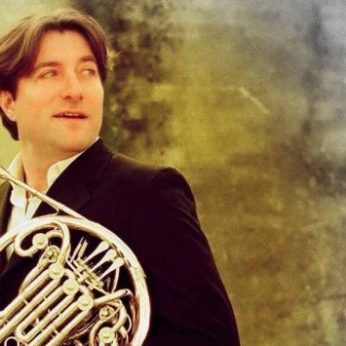Composer: Robert Schumann (b. 1810 - d. 1856)
Performance date: 06/07/2012
Venue: St. Brendan’s Church
Composition Year: 1849
Duration: 00:08:40
Recording Engineer: Anton Timoney, RTÉ lyric fm
Instrumentation: 2vn, va, vc
Instrumentation Category:Duo
Artists:
Hervé Joulain -
[horn]
Paavali Jumpannen -
[piano]

The year 1849 saw Schumann write a bewildering series of multi-purpose chamber works and works for children. As a result of spending so much time on his opera Genoveva, Schuman was in financial difficulties in 1848. Clara had four children during their time in Dresden from 1845-1850, so she was not in a position to rescue the family finances with regular concert tours. Worse still his publisher, Breitkopf and Härtel, refused to accept his Album für die Jugend for publisher, though he soon changed his tune when it became a runaway success under another imprint.
Buoyed by this success, Schumann wrote forty works during 1849, mostly choral works for the legions of amateur choirs and so-called Hausmusik for domestic performance, both of which sold well and more than doubled his composition income. To increase demand for his Hausmusik compositions, Schumann made sure that any one work could be played by several different instruments. This, along with his infuriating habit of giving two works the same or similar titles, makes negotiating a path through Schumann’s chamber music far from straightforward.
Adagio and Allegro can also be met with a cellist or even a violinist playing the solo part, but it was in fact written for the horn. It was written on 14 February, so appropriately the Adagio began life as a Romanze. Also the Romantics associated the key of A flat major with expressions of love. The Adagio is dreamy and nocturnal leading straight into the fiery Allegro. This is in ABACABA form, with the second episode acting as the still centre.
Copyright © 2024 West Cork Music. All rights reserved.
Designed and developed by Matrix Internet